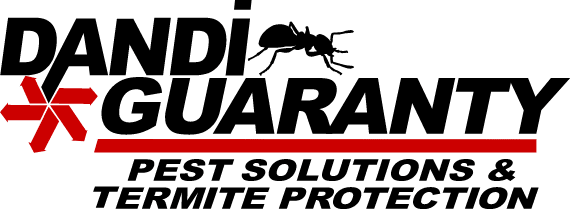
Why Are Fleas and Cockroaches Increasing in Late Summer and Fall in Oklahoma? What Homeowners Need to Know
Fleas and cockroaches commonly surge in activity as late summer gives way to fall, particularly in Oklahoma regions like Tulsa, Oklahoma. This seasonal rise can cause itching, allergies, contamination, and structural damage if unchecked. This blog explains the why with science-backed, local Oklahoma insights and practical tips for early detection and lasting control.
Quick Answer
The surge in flea and cockroach activity in late summer and early fall in Oklahoma is caused by a perfect combination of warm temperatures (70–85°F), extended humidity, seasonal thunderstorms, and the natural pest behavior of shelter seeking shelter before winter. Understanding these factors enables homeowners to optimize pest management timing.
What Are Fleas and Cockroaches?
Fleas are tiny, wingless blood-sucking insects that affect pets and people, known for their rapid reproduction and ability to transmit diseases.
Cockroaches (notably the American cockroach and German cockroach, common in Oklahoma) contaminate food, provoke allergies and asthma, and are often found hiding in warm, humid indoor areas.
Why Do Fleas and Cockroaches Surge in Late Summer and Fall?
Climate, Moisture, and Pest Biology Interact
- Optimal Temperatures Between 70°F and 85°F: This temperature range, which is prevalent from late summer through fall, accelerates flea egg laying and larval development (OSU Integrated Pest Management) and enhances cockroach reproduction, particularly for the dominant species in Oklahoma.
- Persistent High Humidity and Soil Moisture: Oklahoma’s summer thunderstorms and fall rains saturate soil and landscape beds, creating perfect microhabitats for flea larvae and providing moisture-rich harborage for cockroaches both outdoors and indoors (Oklahoma Mesonet).
- Extended Warm Season from Mild Winters: Milder Oklahoma winters rarely kill outdoor fleas or cockroaches, allowing some populations to survive year-round and thereby increasing late-season numbers.
Seasonal Behaviors and Urban Influences
- As nights cool, cockroaches actively move indoors, seeking warmth, particularly targeting kitchens, bathrooms, and basements, increasing encounters (Tulsa Health Department Pest Control).
- Oklahoma’s high rate of pet ownership, particularly of dogs and cats, serves as a reservoir for fleas, necessitating integrated indoor-outdoor control methods to break the infestation cycle.
- The rapid expansion of Tulsa’s residential areas, characterized by dense landscaping, irrigation systems, and mulch beds, creates ideal outdoor habitats for pests, which in turn promotes late-season population booms.
- Oklahoma pest control regulations strongly encourage the use of integrated pest management (IPM) strategies, which combine environmental and chemical controls for improved effectiveness.
How Fleas and Cockroaches Develop and Spread During This Time
- Fleas complete their life cycle rapidly when environmental conditions are right: eggs hatch in a few days; larvae and pupae develop within 1–2 weeks, with adult fleas capable of laying hundreds of eggs.
- Cockroach reproduction is prolific, with females producing capsules (oothecae) containing around 15–50 eggs every few weeks. Nymphs mature in 2–3 months under optimal conditions.
- Fleas jump from animal hosts to infest homes, dropping eggs into carpets and bedding. Cockroaches exploit cracks, moisture, and food debris to multiply indoors.
Step-by-Step Flea and Cockroach Control Guidance
Step 1 - Early Inspection and Monitoring: Schedule professional inspections after late summer to catch rising populations early.
Step 2 - Maintain Cleanliness: Vacuum frequently, wash pet bedding, clean food/prep areas, and reduce clutter to eliminate breeding grounds and food sources.
Step 3 - Yard and Landscape Management: Trim grass, clear leaf litter, remove standing water, and minimize mulch beds to deprive pests of habitat.
Step 4 - Pet Treatment: Year-round use of veterinarian-recommended flea preventatives is crucial for effective control of both indoor/outdoor pests.
Step 5 - Seal Entry Points: Repair cracks around windows, doors, plumbing, and vents to block indoor pest access.
Step 6 - Professional Treatments: Employ pest control experts applying science-based, locally tailored IPM solutions for thorough indoor/outdoor pest removal.
Common Mistakes to Avoid
- Delaying treatment until pests are visibly active allows their populations to grow exponentially and complicates eradication efforts.
- Overlooking outdoor pest habitats, which serve as continuous sources for indoor reinfestation.
- Relying solely on DIY methods or over-the-counter products, which often fail to disrupt entire pest life cycles.
Why Oklahoma Residents Should Choose Professional Pest Control
Oklahoma’s unique climate and growing urban environments create complex pest pressures. The experts at Dandi Guaranty Pest Control are specially trained in local pest biology and IPM principles, offering safe, effective, and comprehensive flea and cockroach control services. From moisture management and habitat modification to targeted treatments, Dandi Guaranty Pest Control provides peace of mind with custom solutions tailored to Oklahoma homes.
Contact Dandi Guaranty Pest Control today to schedule your inspection and protect your family and pets from the seasonal surge of fleas and cockroaches.
Sources:
“Environmental Services - Pest Control.”
Tulsa Health Department, 29 Apr. 2025,
https://tulsa-health.org/services/environmental-and-misc/pest-control/.
“Integrated Pest Management.”
Oklahoma State University Extension, 16 Jan. 2020,
https://extension.okstate.edu/programs/integrated-pest-management/.
Oklahoma Mesonet.
Oklahoma Mesonet, 3 Sept. 2025,
https://www.mesonet.org/.
